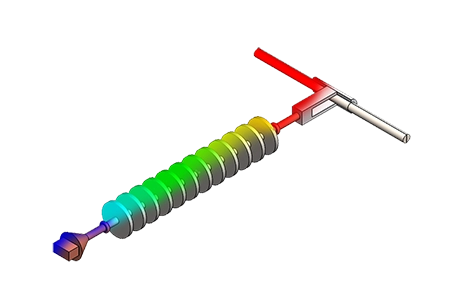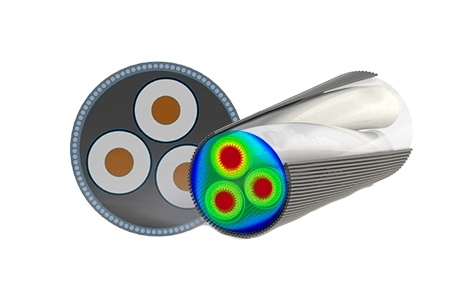The Impact of High-Frequency Phenomena on Shielded Cable Performance
This application note addresses the critical aspects of modeling and simulating shielded electric cables operating at high frequencies within electric power transmission systems. It highlights the significance of considering transient phenomena that can induce overvoltage or overcurrent, potentially compromising cable integrity and functionality. Emphasis is placed on the unique challenges presented by underground cables and the necessity of accounting for frequency-dependent characteristics such as skin and proximity effects, dielectric losses, and signal delay in modeling efforts.
The detailed simulation within EMS of a two-wire shielded electric cable, designed to operate at 500 kHz, aims to calculate key parameters like inductances, resistances, and eddy current distributions. This simulation incorporates materials with specific properties for the conductors, PVC layers, and shielding, alongside the simulation of solid coils representing the conductors with currents flowing in opposite directions.
Meshing strategy is underscored as a pivotal component in achieving accurate simulation results, with adjustments made to cater to the model's complexity and the specific areas of interest. The resultant inductance values from the EMS simulation closely align with reference data, validating the simulation's accuracy. Visual representations of the eddy current distribution further illustrate the effects of high-frequency operation on cable behavior.
This application note, therefore, provides a comprehensive overview of the intricacies involved in the electrothermal analysis of shielded electric cables at high frequencies, underscoring the importance of sophisticated modeling techniques to ensure accurate representation and optimal performance of such cables in real-world applications.



